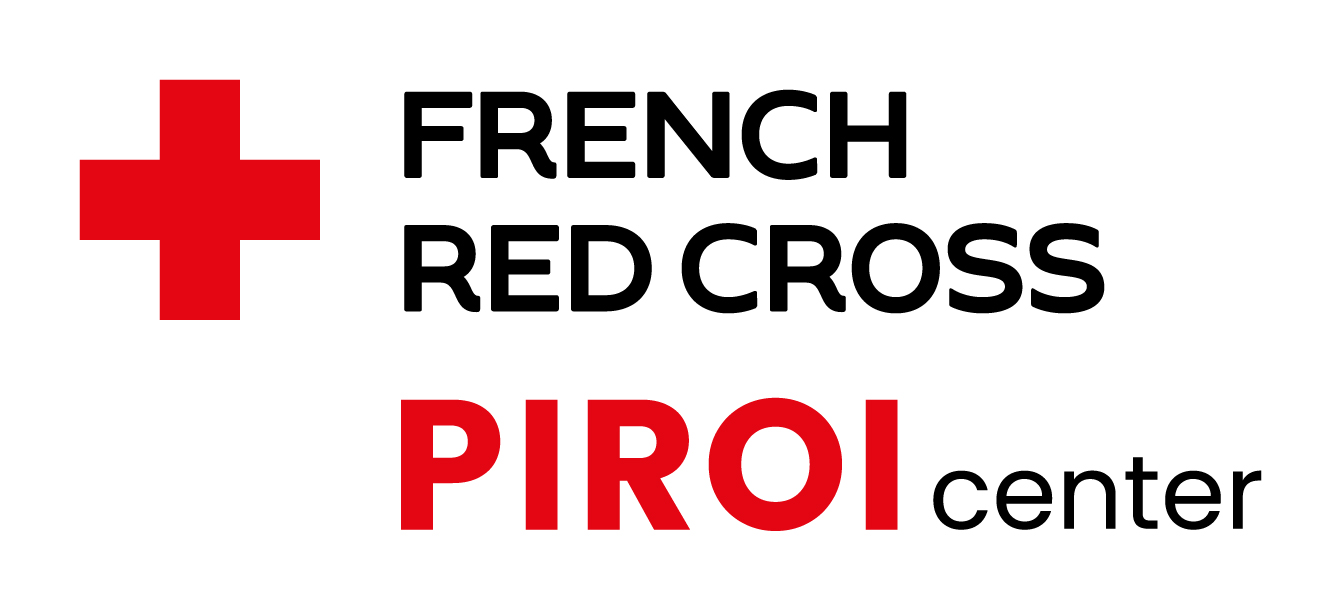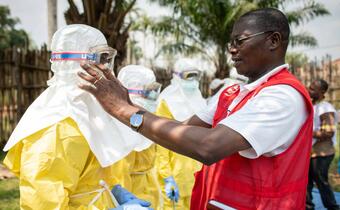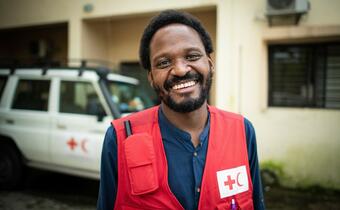|
|
|
|
|
|

|
|
|
|

|
IFRC rapid response mechanisms and tools for disasters and crises (part 1): the Surge mechanism
|
The International Federation of Red Cross and Red Crescent Societies (IFRC) acts before, during, and after disasters and health emergencies to meet needs and improve the lives of vulnerable people. The IFRC is made up of a secretariat and 191 National Societies, bringing together over 16 million volunteers worldwide. Thanks to this network, National Society volunteers are often the first on the scene when disaster strikes.
|
The IFRC secretariat's mandate is to support National Societies in the event of a disaster in their country. To this end, the IFRC has categorized crises into three levels, depending on their severity, and has developed mechanisms and tools adapted to any disaster that would occur within their borders. Among these tools, the Surge mechanism, part of a broader response system, allows for the deployment of trained human resources on specific topics, with or without equipment, to support the National Society. Depending on the needs of the National Society, Surge members are deployed based on their skills and availability, contributing to build the capacity of local volunteers and employees in response to a crisis.
|
This e-mini-learning will focus on the different types of people or units that can be deployed in a crisis :
|
-
-
|
Emergency Response Units (ERU)
|
-
|
Head of Emergency Operations (HEOP)
|
|
Other e-mini-learnings will enable you to take a closer look on the other IFRC response mechanisms and tools, including emergency funding mechanisms and information management tools.
|
|

|
E-learning "Introduction to IFRC operations" - IFRC
|

|
© Myanmar Red Cross
|
|
|
Public : Humanitarian actors, everyone
Duration : 17 lessons (between 50 min and 1h30 each)
Type : e-learning
Languages : english
|
|
|
|
These modules are part of the ‘Induction to IFRC Operations’ learning programme, which prepares staff to deploy in emergency situations with the IFRC. This complete e-learning programme will enable you to learn more about the Surge mechanism.
|
|
|
|
|
Access : International Federation of Red Cross and Red Crescent Societies training platform ( free access, registration required)
|
|
|
|
|
|
Catalogue of Surge services. Discover the various Rapid Response role profile that can be deployed by IFRC - IFRC GO
|
|
|

|
© IFRC
|
|
Human resources are one of the most crucial components of disaster preparedness and emergency response. Through our network, the IFRC can deploy specialized Rapid Response personnel on a short-term basis (up to 3 months) to support emergency humanitarian operations around the world.
|
|
|
|
|
|
|
|
What are the ERUs ? - British Red Cross
|
|
|

|
© IFRC
|
|
Emergency Response Units (ERUs) are teams of specialized personnel and equipment that can deploy at short notice to sudden and slow on-set disasters. They can provide specific preventive as well as life-saving services when local facilities are destroyed, overwhelmed or non-existent.
|
|
|
|
|
|
|
|
Heads of Emergency Operations (HEOPs) - IFRC
|
|
|

|
© IFRC
|
Heads of Emergency Operations (HEOPs) are diverse and experienced staff who provide operational and strategic leadership in the IFRC’s largest and most complex emergency operations. They also support National Societies to plan and implement appropriate responses.
|
|
|
|
|
|

|
|
This catalogue covers emergency response training organized by the International Federation of Red Cross and Red Crescent Societies (IFRC) and National Societies (NS), open to participants from other NS, IFRC or ICRC. It is one of a number of learning tools offered by the Disaster Response Training Team for Movement volunteers and staff wishing to explore rapid response training opportunities within the RCRC movement.
|
|
|

|
This catalogue covers emergency response training organized by the International Federation of Red Cross and Red Crescent Societies (IFRC) and National Societies (NS), open to participants from other NS, IFRC or ICRC. It is one of a number of learning tools offered by the Disaster Response Training Team for Movement volunteers and staff wishing to explore rapid response training opportunities within the RCRC movement.
|
This Emergency Response Framework describes clear roles and responsibilities across all levels of the IFRC secretariat to support timely, predictable and accountable emergency response decision making.
|
|
This framework provides a consistent and competency-based approach to the recruitment, selection, performance management, and learning and development of surge personnel across the Red Cross Red Crescent Movement.
|
|
|

|
|
|
|
|
|
|
The PIROI - French Red Cross regional program is supported by
|
|

|
|
|
Stay informed on our website and social networks:
|
|
  
|
|
|
|